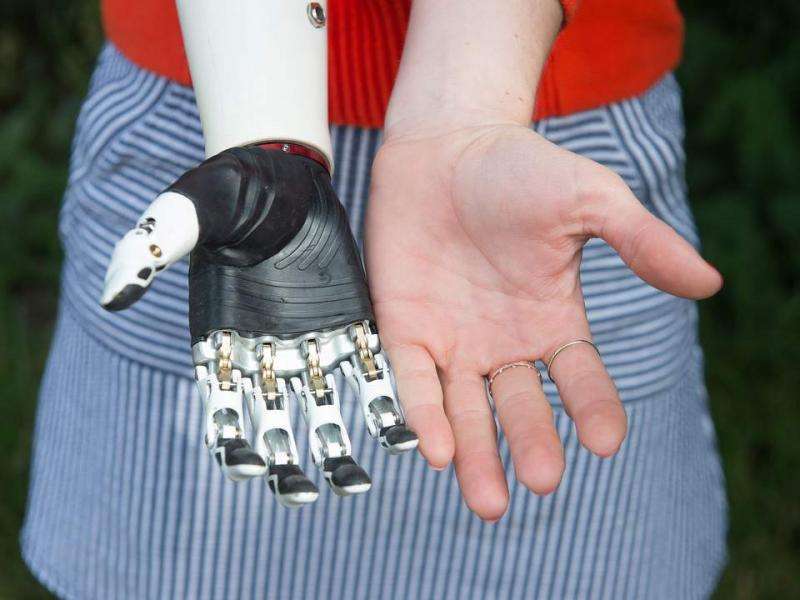June 16, 2015 weblog
Lifelike bionic hand functions via 14 precision grips

The first UK user of a substantially lifelike hand is 29-year-old Nicky Ashwell, who was fitted with the prosthetic, called the bebionic. The event marks a step up in the development of smaller, versatile myoelectric hands. The bebionic and its technology were showcased Tuesday at a UK launch, at the London Prosthetics Center.
The Center is a facility that provides services in prosthetics. Abdo Haidar, consultant prosthetist and director at the Center, said that the "bebionic small hand marks a turning point in the world of prosthetics."
Ashwell was born without a right hand, also described as a "congenital amputee." She had been unable to do many of the two-hand everyday tasks that others may take for granted—holding a glass with two hands, opening a purse, riding a bike. She had been using a cosmetic hand without movement before being fitted with the new hand.
The "bebionic" marks a significant change for her, as it mimics the functions of a real hand via 14 different grip patterns and hand positions. This now gives her the ability to perform a range of precision movements.
The hand has 337 mechanical parts. Its materials include rare Earth magnets. Its individual actuators engage the magnets on each finger to enhance performance through a balance of speed with strength.
The developers of the bebionic are Steeper. This is a UK-based manufacturer and supplier of prosthetic, orthotic and assistive technology products. They said the bebionic small hand was the only multi-articulated hand with patented finger control system using rare Earth magnets.
The hand weighs just 390g, with the distribution of weight towards the wrist, for natural movement. At the same time, the hand is strong enough to handle 45kg—the weight of around 25 bricks.
Steeper created the hand in scale for women, teenagers, and smaller-framed men. "An accurate skeletal structure was firstly developed, with the complex technology then specifically developed to fit within this in order to maintain anatomical accuracy. In other myoelectric hands the technology is developed first, at the expense of the lifelikeness," said Ted Varley, Steeper's technical director.
The hand took seven years to develop. How it works—via sensors and powerful microprocessors. The bebionic small hand makes use of sensors triggered by the user's muscle movements that connect to individual motors in each finger. The technology comprises a unique system that tracks and senses each finger through its every move, said Steeper.
© 2015 Tech Xplore




















